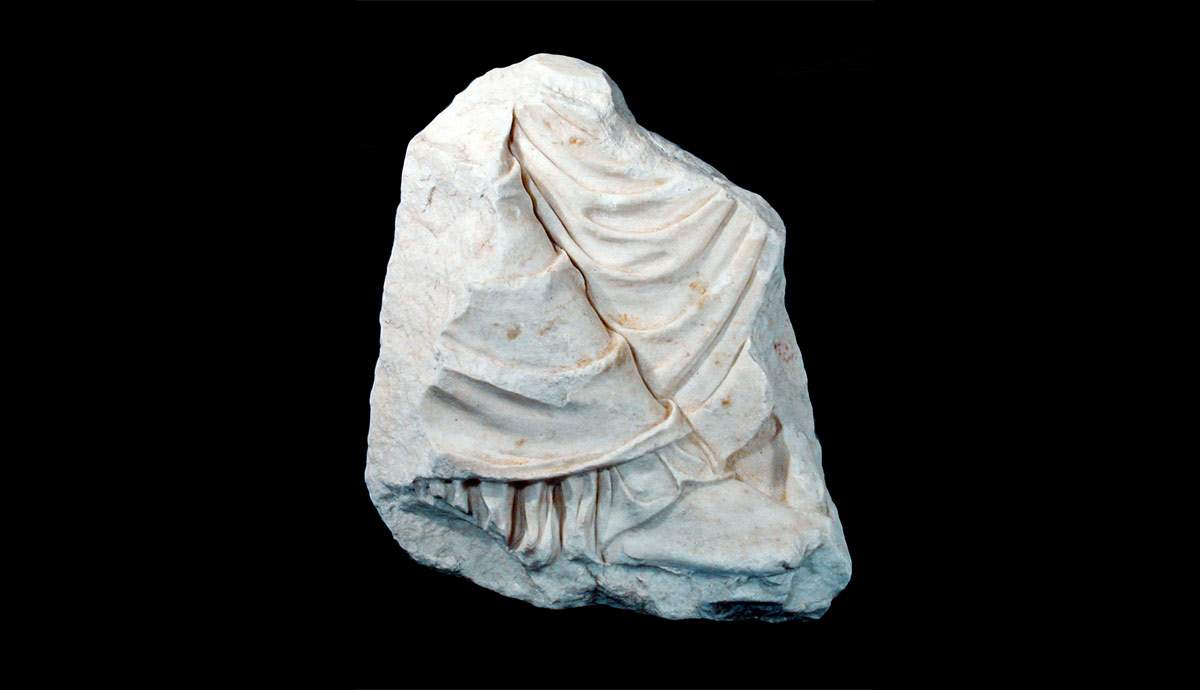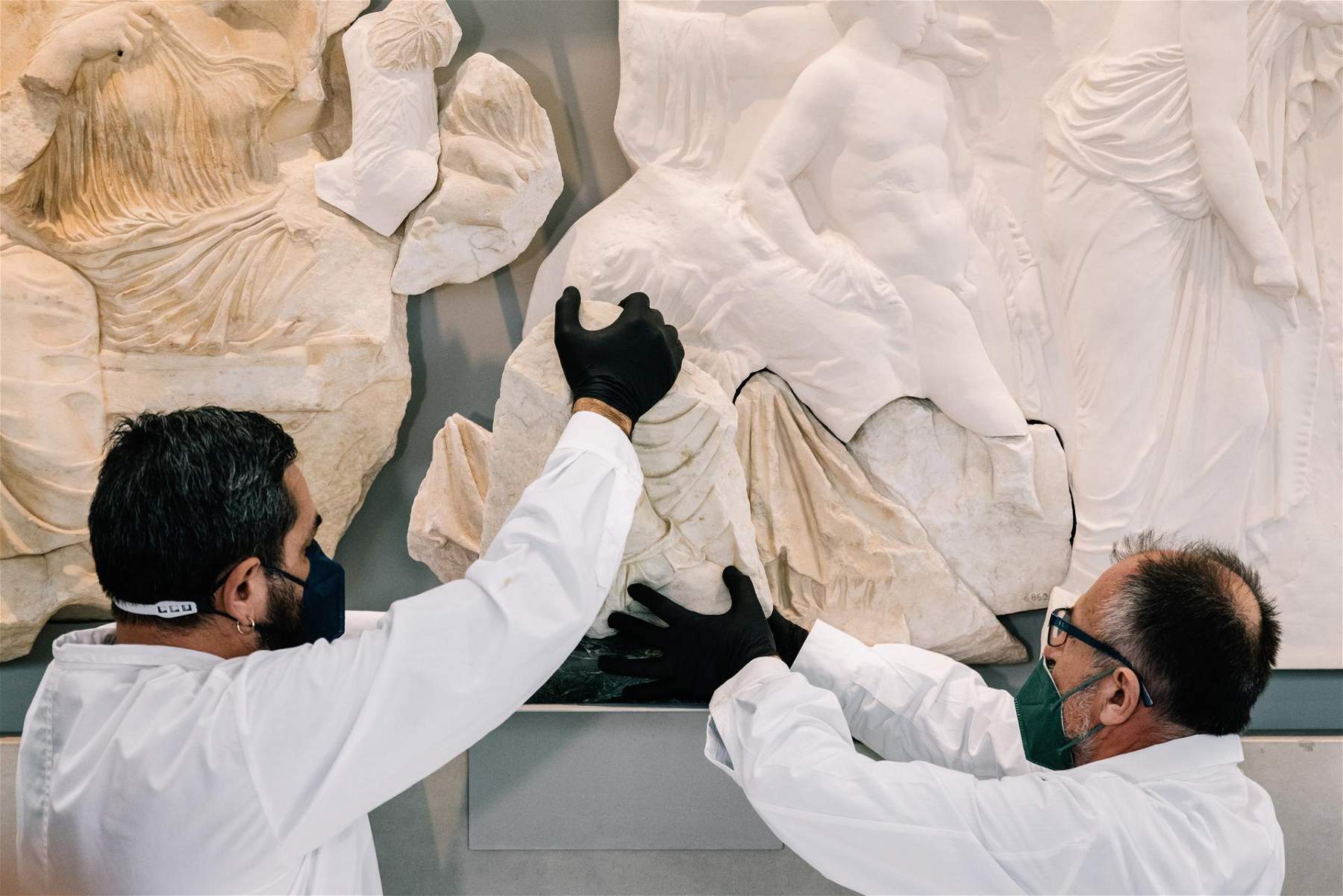A twist in the Parthenon marbles affair: the Sicilian Region has in fact given the go-ahead for the return to Greece of the Palermo Fragment, also known as the Fagan Fragment, the fragment of the slab belonging to the Parthenon’s eastern frieze depicting the foot of Artemis (Goddess of Hunting) seated on a throne, and which is preserved at the “Antonino Salinas” Archaeological Museum in the Sicilian capital.
It is a valuable archaeological find that came, at the beginning of the 19th century, into the hands of the English consul Robert Fagan under circumstances that are not entirely clear, after which, upon his death, it was bequeathed to his wife, who subsequently sold it between 1818 and 1820 to the Royal Museum of the University of Palermo, of which the “Antonino Salinas” Regional Archaeological Museum is the heir. Since last January 10, the fragment is already at the Acropolis Museum in Athens, where in a ceremony, attended by Greek Prime Minister Kyriakos Mitsotakis, it was reunited with the original frieze from which it had been removed. It was initially planned that the fragment would remain on loan to Greece for eight years, and Greece in turn would reciprocate with a headless statue of Athena from the fifth century B.C.E. and a geometric amphora from the first half of the eighth century B.C.E., works intended to remain in Sicily four years each. The agreement, which was sealed in February in the Sicilian capital in the presence of the Minister of the Republic of Greece, Lina Mendoni, and the Undersecretary for Culture, Lucia Borgonzoni, also provides for the organization of exhibitions and other joint initiatives that will be carried out in collaboration between Sicily and Greece on topics of cultural interest of international scope.

But let us come to the restitution of the fragment: the government of the Sicilian Region, through a resolution of the Council, gave its consent to the so-called “sdemanializzazione” of the property, that is, the technical act that was necessary for the final restitution of the fragment, after having cashed in the preceding weeks the go-ahead of the Attorney General’s Office of the State to the procedure of “sdemanializzazione” by Sicily for the purpose of restitution to Greece and the okay of the Ministry of Culture on the competence of the Sicilian Region to proceed in this sense. All that is awaited now is the final “clearance” of the Mic, which at this point could arrive very quickly. Sicily is thus leading the way for the return to Greece of the Parthenon frieze finds, making its own decisive contribution to the debate that has been going on for some time at the international level: part of the marbles, as is well known, are kept at the British Museum in London and the affair is at the center of a long duel between London and Athens. The Palermo decision now could be a game changer.
The process leading to the return of the Palermo marble had started from the Sicilian Region itself, which, at the suggestion of the Regional Councillor for Cultural Heritage and Sicilian Identity , Alberto Samonà, had forwarded the request to the “Committee for the Recovery and Restitution of Cultural Heritage” established at the same Ministry. An act strongly desired by Councillor Samonà himself, together with Sicilian Regional President Nello Musumeci, and shared with the Greek Minister of Culture and Sports, Lina Mendoni.
The return of the fragment to Athens was made possible precisely on the basis of the aforementioned agreement, born out of the fruitful interlocution between the Sicilian government with Councillor Samonà and the government of Athens with Minister Mendoni, signed in February by the Regional Archaeological Museum “A. Salinas” of Palermo, directed by Caterina Greco, and the Acropolis Museum of Athens, directed by Nikolaos Stampolidis, pursuant to Article 67 of our Cultural Heritage and Landscape Code, which provides for the multi-year transfer and exchange of archaeological artifacts between the two museum institutions.

“The final restitution of the Parthenon fragment,” says Regional Councillor for Cultural Heritage and Sicilian Identity Alberto Samonà, “is the confirmation of the feeling of cultural brotherhood that binds Sicily and Greece, two lands united by common Mediterranean roots and ancient and deep ties. With President Musumeci we shared this important gesture, in the awareness that it is precisely on Culture that new relations should be founded between countries that intend to focus on their cultural heritage to build a stable future. As I also said in January in Athens, we have laid the foundations for the birth of a Europe of Culture, based on ancient and universal values: in a time of wars and uncertainties, we are strongly convinced that it is precisely from Culture that the message of peace can come that will unite peoples on common principles and on a vision of the future that is sorely needed. I would like to thank the Ministry of Culture, which has shared this path from the very first moment, never failing to give its support and, in particular, Undersecretary Borgonzoni who, also because of her role related to Unesco matters, has offered Sicily the necessary support.”
“The procedure followed by the Regional Government of Sicily and the Ministry of Culture of the Republic of Italy for the final repatriation to Athens of the Fagan Fragment,” notes the Minister of Culture and Sports of the Hellenic State, Lina Mendoni, “clearly and morally show what is the way forward for the return of the Parthenon sculptures to Athens. The reunification of Phidias’ sculptures is a moral obligation for Europe, in the context of protecting its common cultural heritage, Democracy, and the prosperity of its peoples. We live in a time of great challenges, constant challenges and achievements. Today, investing in the values and principles of Humanism has become more necessary than ever. We are grateful to the Regional Government of Sicily and its President Hon. Nello Musumeci and especially to the Regional Councillor for Cultural Heritage and Sicilian Identity Alberto Samonà for their initiative and generosity. The Minister of Culture of the Italian Republic Hon. Dario Franceschini and Undersecretary for Culture Senator Lucia Borgonzoni strongly supported Sicily’s request. I warmly thank them. The political will expressed confirms the long ties of cultural relevance and real recognition of our common Mediterranean identity.”
And now, for a work that goes away, it is hoped that a work will return: in fact, Sicily has been waiting for years for the return of the Morgantina silverware, with respect to which Italy and the United States are experiencing an inverted situation compared to the one that existed between Italy and Greece for the Athens fragment(on these pages we have recounted the affair in detail: the precious sixteen pieces from the 3rd century B.C.C. are in fact at the Met in New York, which sends them to Italy once every four years (and for a four-year stay) on the basis of an agreement signed in 2020. The hope, then, is that the Sicilian Region’s diplomatic activity on the subject of restitution may also lead to the definitive return of the Morgantina silverware.
 |
| Palermo's Parthenon marble will remain in Greece forever: Sicily returns it |
Warning: the translation into English of the original Italian article was created using automatic tools. We undertake to review all articles, but we do not guarantee the total absence of inaccuracies in the translation due to the program. You can find the original by clicking on the ITA button. If you find any mistake,please contact us.